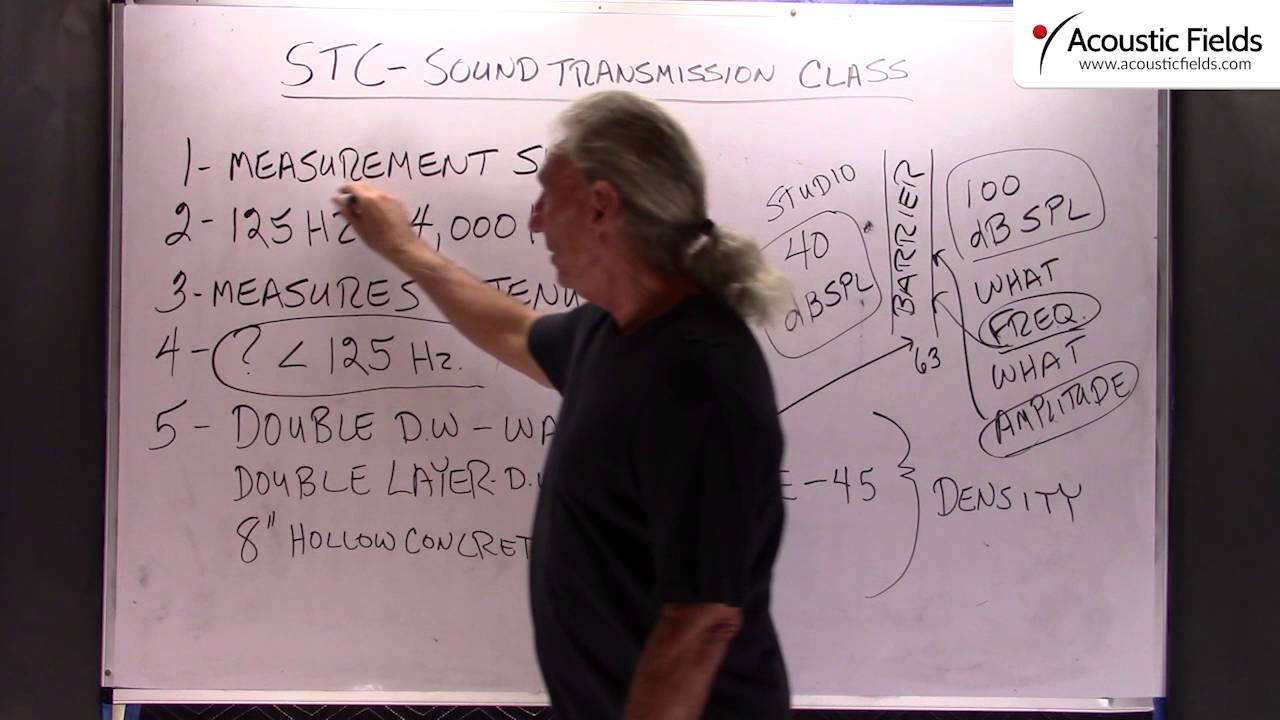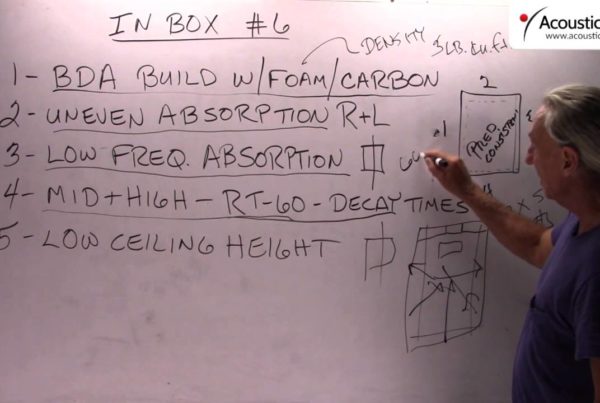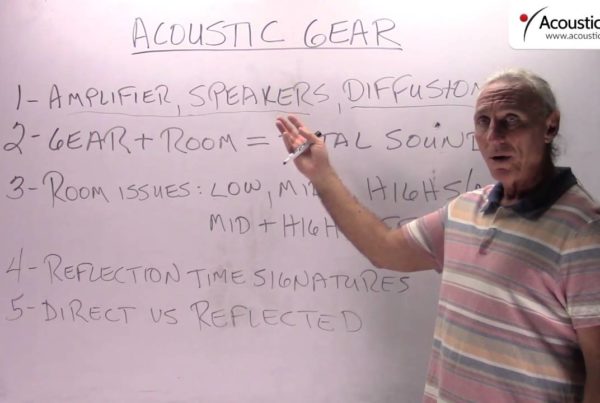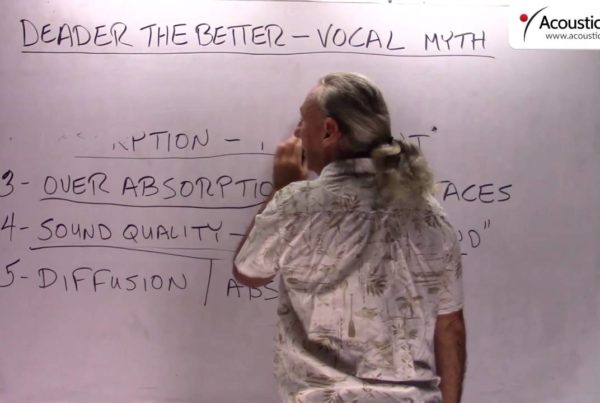Today we’re going to talk about a common term called STC or sound transmission class rating. Sound transmission class, an old system has been around for years, it needs to be updated I think a little bit. There’s attempts now to do that but some of the data in the literature is 30 years old and we need to update that system but it’s just a measurement system but here’s the key the people don’t understand.
It’s a measurement system from a 125 cycles to 4,000. That’s fine. That’s a measurement system confined to that domain but you have to be careful about how you apply it to your situation. What does it do? It measures attenuation or the loss of energy in a system. So if we have a lot of noise on the outside of our studio and we know from our physics that the quickest way to keep that noise from bothering our studio situation is to build a barrier. And that’s the shell of your room. And we’ve talked about that in numerous videos.
So if we have a lot of noise on the outside of our room and we want minimum noise on the inside of our room we have to build a barrier. But that barrier is directly dependent on the frequency and the amplitude or strength of the noise out there. So the frequency and the amplitude determine what kind of barrier you build. Not because you think that this barrier would work or that barrier would work in this case. You have to let the measurements of the noise tell you exactly what barrier you use. The lower the frequency and the higher the strength, usually the thicker the barrier. So you have to weigh all of these data and make sure that your barrier is data driven in its construction or else you won’t be happy.
What do you do with frequencies below a 125 cycles? Because this STC measurement stays at a 125 on the low end. Well, you look for other measurement systems that are out there. You can model and we’re doing that now on some of our wall constructions and we’ll post that on the website for you. But the bottom line here is most of our problematic frequencies are below a 125 cycles.
So STC is a good system for speech and things like that but not really a good system for low frequency energy. Let’s look at some examples. The standard 2×4 double wall approach that we see a lot of in the literature with drywall on both sides has a measured STC of 63. So if we have a 100 on this side, we build our double wall with our 1 inch airspace, you know, then we can anticipate 40-45 on the inside. If our frequencies of concern on the noise side are from 125 to 400. Well, most of the time they’re even more lower than 125. So our barrier won’t be helpful on those frequencies.
So here’s another example to kind of show you. You put two layers of drywall on both sides of a 2×4 frame you get a 45 STC rating which is 125 to 4,000, don’t forget that. Hollow concrete block 48 and we could list numerous others and we’ll post some of those of those on our Facebook page so you can get a feel for it. But STC sound transmission class is a rating, a measurement system for frequencies from 125 to 4,000. If that’s your noise issue, great. But most cases it’s not.
I had a client the other day call me say he built this home theater out of the standard double wall, 1 inch airspace, drywall on both sides and he is very unhappy with the way it handles low frequency energy. Look at the definition. There’s your issue. So you have to be very, very careful.
So sound transmission class is a rating and measurement system from 125 to 4,000. But keep in mind, in today’s audio rooms we’re dealing with frequencies and amplitudes that are much greater than that frequency range that sound transmission class measures.
—
This is an unedited transcript from our video series from Acoustic Fields. There will be some errors in grammar and sentence structure that occur during this translation process.
For complete understanding and comprehension, please view the video which is included in this text. For any additional information regarding this topic or others relating to room acoustics, please contact us directly at:
P: 520 – 392 – 9486








The discussion on ductwork noise transmission from Acoustic Fields highlights crucial aspects of HVAC system acoustics. The movement of air…
Great build plans. thank you Denis
You must use absorption. Never place a chair against a wall.
A friend and I built several diffusors using these plans and they turned out absolutely beautiful. Very good instructions and…